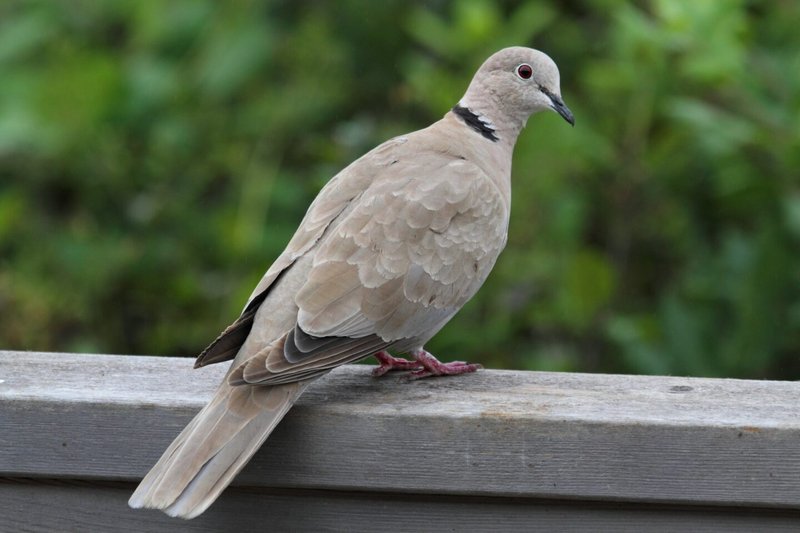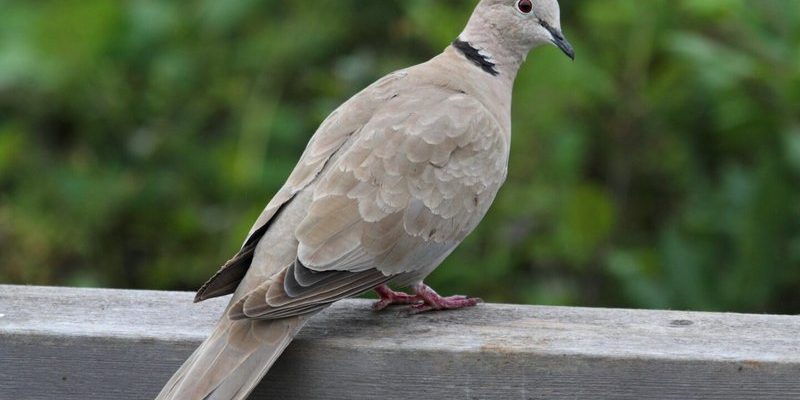
Often mistaken for other dove species, the Eurasian Collared Dove is a young star in the avian world, having recently made itself at home in North America. With its unique calls and adaptable nature, it’s created quite a niche. You might be wondering what makes these birds special or how they differ from other doves. Stick around, because we’ll dive into ten fascinating facts about the Eurasian Collared Dove.
1. A Relatively New Arrival to North America
You might not know that the Eurasian Collared Dove is a bit of a newcomer on the block in North America. It first appeared in the Bahamas in the 1970s, making its way to Florida by the early ’80s. From there, it spread rapidly across the continent. This doves’ rapid spread is akin to an unexpected guest who shows up at a party and becomes the life of it!
What’s fascinating is how quickly these birds adapted to various environments. You can find them in urban areas, suburbs, and even rural landscapes. Their ability to thrive in different settings has made them a common sight across North America today. If you live in a place with lots of trees, you might be seeing them more often than you think!
2. Distinctive Appearance
The appearance of the Eurasian Collared Dove makes it stand out from other doves. Their feathers are mostly a soft grayish-brown, which can blend into tree bark or gravel—a neat little trick for avoiding predators. But the real showstopper? That black “collar” around the back of their neck! It’s like wearing a chic fashion accessory that also serves a purpose.
When you observe them closely, their tails are square-shaped, unlike the pointed tails of some other dove species. This simple feature can help you identify them easily. And if you’ve ever seen a flock of these doves, you’ll likely notice their graceful way of flying, often gliding elegantly through the air with minimal effort.
3. Unique Vocalizations
Let’s talk about their voices. The Eurasian Collared Dove has a cooing sound that’s quite distinct. It’s a bit like having a soft, calming conversation with a friend. They have a three-part call that goes “coo-COO-coo,” and they can often be heard during the day or even at night. Their vocalizations are part of what makes them such a charming presence in neighborhoods and parks.
Interestingly, their calls vary slightly by region, which can be a fun way to notice their subtle differences. If you hear one of these doves, you might be tempted to sit back and just listen. It’s as though they’re inviting the world to join them in a moment of peace.
4. A Diet That’s Quite Varied
When it comes to dining, Eurasian Collared Doves aren’t picky eaters! Their diet primarily consists of seeds and grains, but they also enjoy fruits, berries, and even some insects when they’re feeling adventurous. Think of them as the omnivores of the bird world—they eat just about anything they can find on the ground.
This adaptability in diet contributes to their success in various habitats. Whether it’s a backyard bird feeder, a farmer’s field, or a city park, these doves can easily find something to munch on. Watching them forage can be a delightful way to connect with nature, especially if you’re lucky enough to spot one pecking away at a treat.
5. Breeding and Nesting Habits
If you’ve ever been curious about where these doves make their homes, let’s dig into their nesting habits. Eurasian Collared Doves are known to be monogamous, often forming long-term pair bonds. They typically build their nests in trees or shrubs, using twigs and other materials to create a cozy space for their young.
Once they lay eggs, both parents take turns incubating them, which is a heartwarming sight. You might imagine them working together as a little team—cooing softly to each other while they sit patiently on their eggs. After about two weeks, the chicks hatch, and the parents are busy feeding and caring for them. It’s a beautiful cycle of life!
6. Impressive Migration and Travel Skills
Although the Eurasian Collared Dove is adaptable, they don’t migrate in the same way some other birds do. Instead, they tend to settle in places with abundant food and shelter, often sticking around year-round in areas where the climate is suitable. This behavior sets them apart from many migratory birds, who make long journeys to find warmth during winter.
That said, they can still travel significant distances when necessary. So, if they feel the urge to explore or if food sources dwindle, they can move to a nearby area. Imagine them—kind of like your adventurous friends who, while they love their hometown, might occasionally pack up for a road trip to see new sights!
7. Differences from Other Doves
Eurasian Collared Doves are often confused with Mourning Doves, which are more common in North America. While both have similar features, the Eurasian Collared Dove is larger and has that distinctive black neck collar. The Mourning Dove, on the other hand, has a more slender shape and longer tail feathers.
Understanding these differences can help bird-watchers identify what they’re looking at in the wild. If you see a larger dove with a more pronounced “collar,” you can confidently say, “That’s a Eurasian Collared Dove!” It’s all part of the fun of getting to know our feathered friends.
8. Their Role in Local Ecosystems
Eurasian Collared Doves play an important role in local ecosystems. By feeding on seeds and grains, they help disperse these plants throughout their habitat. Not only do they contribute to the food web, but they also attract predators like hawks and other birds of prey, which helps keep the ecosystem in balance.
You might think of them as part of a larger community, where each species has its part to play. They might seem like simple backyard birds, but they actually contribute to the richness of their environment in ways that are really impactful.
9. Cultural Significance
Doves have long been symbols of peace and love throughout cultures, and Eurasian Collared Doves are no exception. In various mythologies and stories, doves represent hope and renewal. Their soft cooing often evokes calm feelings, making them a favorite among bird watchers and nature lovers.
If you take a moment to observe these doves in your garden or at the park, you might find yourself feeling a bit more at peace. It’s nice to think that a simple bird can remind us of these deeper meanings in life.
10. A Growing Population
Finally, one of the most encouraging facts about the Eurasian Collared Dove is that their population is thriving. Thanks to their adaptability and the availability of food, they have successfully established themselves across many regions. This growth indicates that they’re a resilient species that can thrive even in changing environments.
Their presence in neighborhoods can be a lovely reminder of the beauty of nature, even in urban spaces. Plus, more people are becoming aware of these delightful birds, which helps foster a greater appreciation for wildlife around us.
Wrapping up, the Eurasian Collared Dove is a fascinating bird full of surprises. Whether you’re enjoying their calls in your backyard or admiring their graceful flight, there’s so much more to these doves than meets the eye. Their journey from Europe to the Americas is just the beginning. So next time you spot one, take a moment to appreciate these incredible birds and all they bring to our world.

